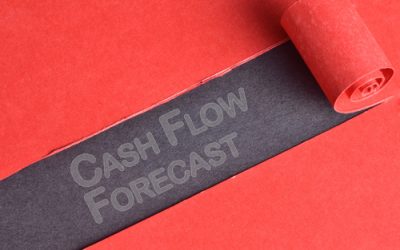
Imagine your business is a ship and you’re the captain. You wouldn’t set sail without navigational guides, weather reports, supplies for the crew, and fuel stores. These things are all essential for your journey. In your small business, cash flow reports are the navigational guides that keep your ship steered in the right direction. Income is the fuel that keeps the business running. Expenditures are the waves and storms that you’ll have to navigate through.
Understanding cash flow is essential for making good business decisions that will keep your business afloat. Cash flow forecasting is the use of reporting to make predictions about your business accounting. Cash flow statements tabulate the flow of money in and out of the business and are useful for determining a business’ ability to meet its obligations. This can be valuable for a potential investor in the business. It also allows the business owner to make crucial business decisions.
Accurate cash flow forecasting can mean the difference between inventory overstock and backorder. Between a paying off business debt and defaulting on loans. Between hiring personnel and cutting hours. Accuracy can be achieved if you follow these five guidelines:
1) Analyze your sales pipeline.

What stage are you at with closing your sales leads? Will you require a large outlay of cash in order to close those deals, whether it be for travel to meet clients, presentation materials, or discounted services? If you have sales near the end of the sales funnel you can expect cash flow into the business as long as you know the average length of the closing stage.
2) Hold sales team accountable for their sales forecast.
A sales forecast is worthless if the deals never close. If your sales team predicts close rates on 75% of their prospects, hold them accountable for their numbers. If you are counting on those deals in your cash flow forecast and they never materialize, you’ll be making business decisions based on money that isn’t coming in.
3) Automate invoice collections so payments come in on time.
Late-paying customers can disrupt your business. If you are expecting payments on a specified schedule and they never come in, you’ll be the one holding the bag. Follow up with your customers who are late on their payments. Charge interest for chronic offenders to incentivize on-time invoice resolution. Set up automated payment collection so the installments are automatically debited on a regular payment schedule.
4) Predict variable/seasonal expenditures.

Expenses generally fall into two categories: fixed and variable. Fixed expenses include things that generally don’t change from month to month: rent or mortgage, utilities, loan payments, insurance, and maintenance. Everything else falls into variable expenses: payroll, inventory, and equipment.
5) Use your historical data to make accurate predictions.
History is the best indicator of performance. While it’s time consuming to enter data, ideally you’ll want eighteen months to three years of figures in order to compare and predict. Historical data allows you to plot out trends and see where your income and expenditures are highest. Looking at your historical data will tell you at a glance what your future cash flow will be. You can also predict seasonal downturns for your income and adjust your expenditures accordingly.
It’s important that you have the right accounting team analyzing your cash flow reports. JADDE Financial Solutions provides cash flow statements as a service to our clients. Take the guesswork out of your business decisions with accurate cash flow forecasting by your trusted accounting firm.



